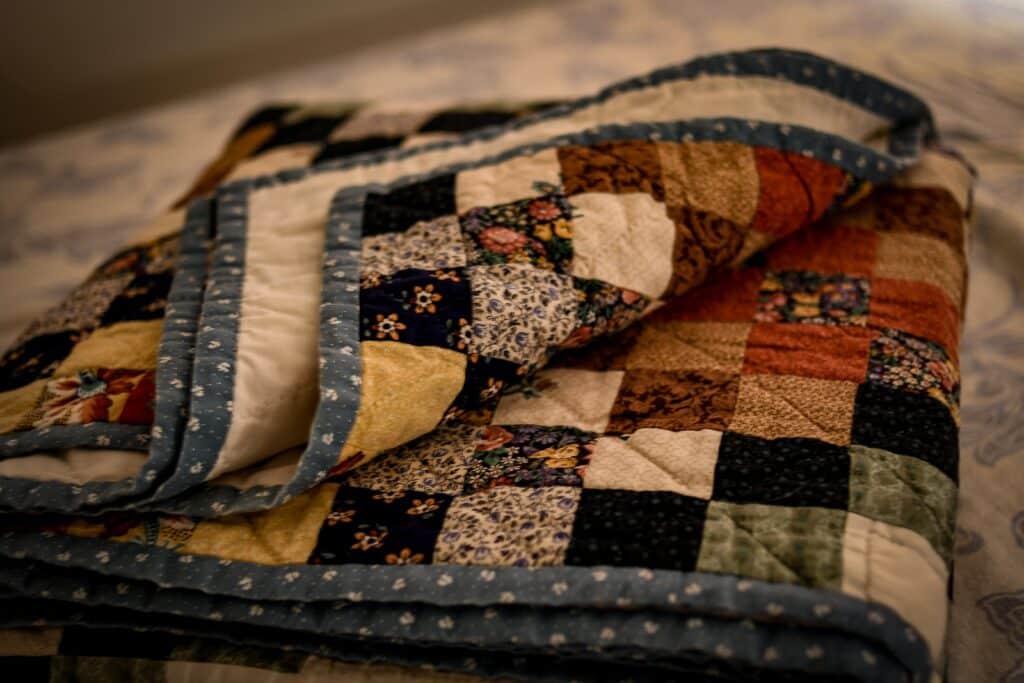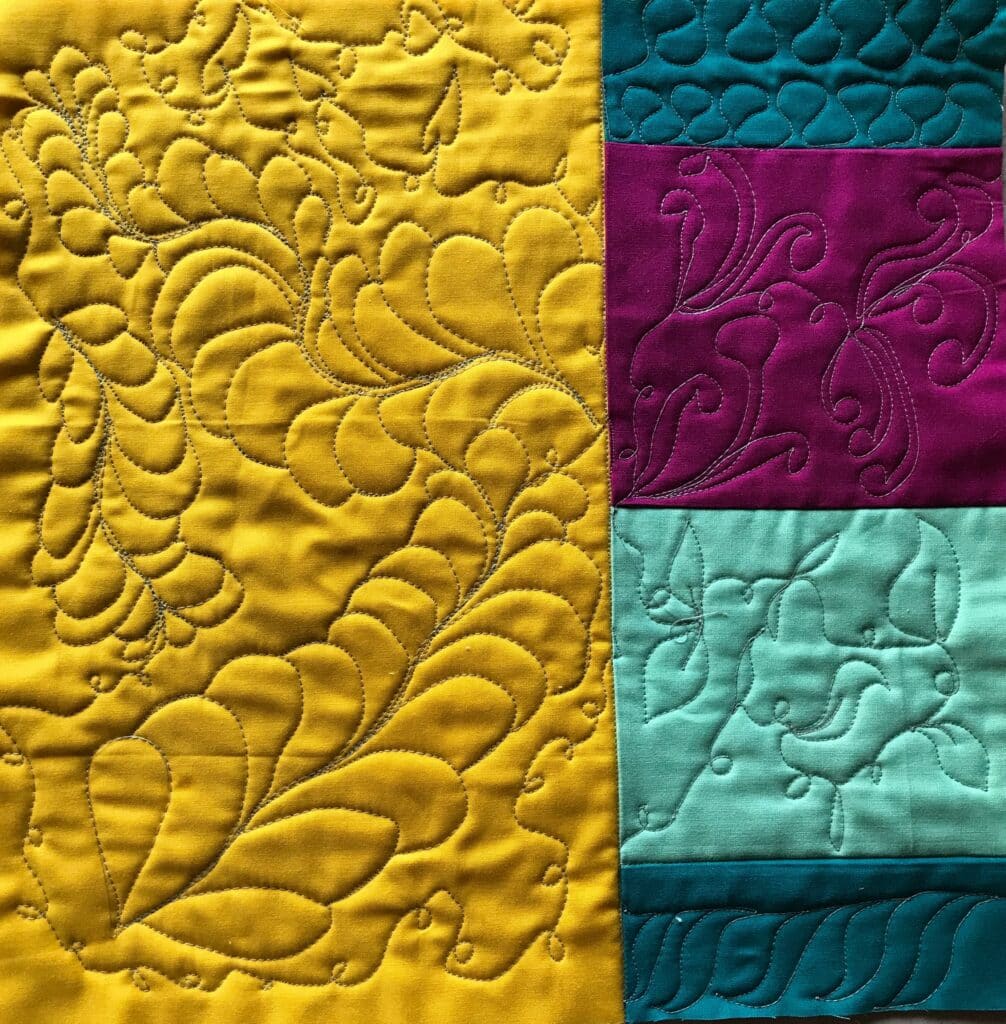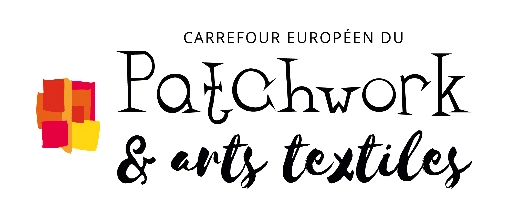Patchwork and quiltmaking are two very different needlework techniques, but they are often used together to create textile pieces like blankets, bedspreads, cushions and other fiber works.
The patchwork
Patchwork consists in putting together pieces of cloth of various colors, patterns and weaves to create a new object. Oftentimes, the fabric scraps are cut into geometrical shapes, such as squares, triangles or diamonds, then spread in blocks before being finally sewn together into the final piece.
This means patchwork is mainly a matter of sewing different pieces of cloth together.
Many different things can be created from a patchwork: clothing, bags, mural decors, armchair covers…


Quiltmaking
On the other hand, quilting consists in sewing together three layers of fabric to obtain a padded, warm and thicker piece.
It requires:
- A top layer called a quilt top.
- A middle layer, the batting, which determines how warm and thick the final piece will be.
- A bottom layer, or backing, used to sew together the quilt top and the batting.
Put together, the 3 layers form what is simply called a quilt sandwich. Once they have been sewn together, they create the quilt.
Therefore, a quilt must be made of these 3 different layers. Its main purpose is to bring warmth.
Although the top layer, the quilt top, may be made of a single piece of fabric, it is generally based on a patchwork.
The final result is a thick, warm and decorated piece.
While patchwork can be summed up to a technique to put together different pieces of cloth, quilting as a technique consists in fixating three layers together with decorative stitches (or decorative thread).
The Amish quilt
Just like patchwork, quiltmaking as a needlework technique has existed for centuries.
While it wasn’t invented by the Amish, they widely contributed to its popularity. Reusing and upcycling scraps of cloth to sew warm and useful bedspreads, often working together as a community, totally meets the Amish way of life.
But more than their practical side, it’s the patchwork patterns of the top layer of these quilts that made Amish quilting famous.
A modern perspective on quilting and patchwork
While a traditional quilt must necessarily be a thick and warm piece of fabric comprising of 3 layers of fiber, modern trends for creating patchworks and quilts sometimes allow for works made without these 3 layers.
The 3D aspect of the piece is rather obtained by adding pieces, of fiber or of other elements, onto the quilt top.
Other trends and movements are also emerging: patchwork has always been evolving along the years. Far from being a strict and fixed hobby, it is renewed and reinvented all the time.
Patterns, fabrics, styles and models follow along with new trends, and creators from all over the worlds are inventing a new patchwork.
A good way to discover talented artists and their amazing work is to visit our yearly event in the Val d’Argent (Silver Valley) of France, in Alsace at Sainte-Marie-aux-Mines, Sainte-Croix-aux-Mines, Lièpvre and Rombach-le-Franc.
